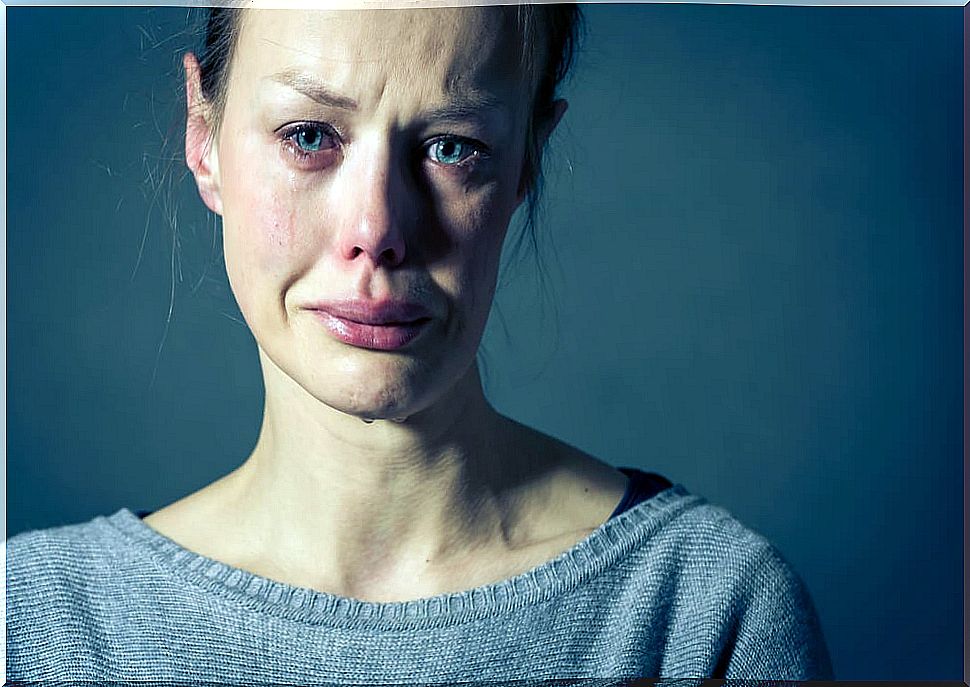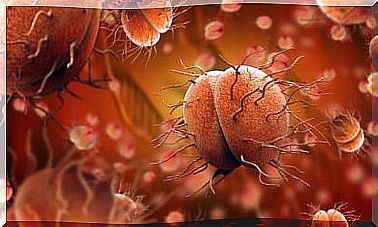Dermatillomania: When Anxiety Hurts The Skin
Dermatilomania or excoriation disorder is a type of psychological disturbance caused by anxiety and characterized by an irrepressible urge to scratch the skin. It also includes pinching, picking scabs or scars and even insistently touching small previous wounds, such as the typical pimples.
But why does this problem arise? What can you do about it? To know the answers, we must first delve a little deeper into the definition and causes of dermatillomania.
What is dermatilomania?

As the word itself indicates, “dermatilomania” is a type of mania, compulsive obsession. We are therefore facing a problem of psychological origin that is included in the Diagnostic and Statistical Manual of Mental Disorders (DSM-V).
It is also known as excoration disorder, and as striking as it may be, it is a type of mental condition that has been described more than a century ago.
- It was Dr. Erasmus Wilson who spoke for the first time about dermatillomania in 1875.
- Later, another French dermatologist, Louis-Anne-Jean Brocq, would pick up the strange case of a young woman who had injured her face in an unusual way.
- Her need to repeatedly scratch, pinch and pick at acne scabs had led to a serious skin infection and serious injuries that would leave marks for life.
From the end of the 19th century to the present day, cases have continued to be described and debates have been opened among experts in psychology and dermatology.
For a time it was thought to be a type of obsessive-compulsive disorder. However, it was not until a few years ago that dermatilomania was finally recognized officially, and as a different type of disorder from those collected so far in previous editions of the DSM-V.
What symptoms or characteristics does dermatilomania present?
- It is characterized by the need to touch, scratch or pinch any part of the body (usually the face, neck, back, scalp and arms).
- The area where the patient tends to have the greatest fixation is in those areas where there is some type of imperfection, such as pimples, wound scabs and flaking.
- It should be said that this type of disorder has different degrees. There are those who do it when they are at rest and almost unconsciously and there are those who cannot avoid doing it almost constantly.
It is important to note that dermatillomania can be serious in some cases. Infections can be severe, even more, there are patients who cannot control this need due to scratching to the point of causing deep wounds that require cosmetic operations.
Who can suffer dermatilomania?

Dermatilomania is a mechanism by which the person seeks to reduce anxiety through a repetitive act, in this case, scratching the skin and excoriation. Thus, among the causes that usually determine this condition we can find the following:
Psychosocial stress
- We are faced with a need to channel stress. That is where that physiological activation (scratching) generates relief, distraction to the mind and a means to appease the intense internal restlessness.
- Therefore, it is a condition that the brain carries out to divert our attention and receive relief, without knowing that in reality what is achieved is the opposite: causing us skin injuries and infections.
- Dermatilomania, therefore, can appear at any time where we suffer from work stress, affective problems, anxiety, tensions, fears.
Also, this type of behavior is common in people who have suffered some type of psychological trauma.
Obsessive-compulsive profiles
This disorder usually presents a psychiatric comorbidity with other previous conditions. The most common are the following:
- Compulsive-impulsivity disorders.
- Body dysmorphic disorder.
- Substance abuse disorders.
- Eating disorders.
- Borderline personality disorder.
What type of treatment is there for dermatillomania?

There are several types of approaches and strategies for treating dermatillomania.
- The most important thing in these cases is that the patient receives assistance to treat and heal the skin lesions.
- Second, it is essential that a good diagnosis be received.
- Treating a person with depression will not be the same as treating someone with a traumatic past; someone with anxiety than a young person with borderline personality disorder.
- After the diagnosis comes the treatment. In most cases, a pharmacological and a psychological strategy is used. The latter is often overlooked, something detrimental to the recovery of the affected person.
Psychological care is always essential
The best treatment for excoriation disorder is cognitive behavioral therapy. The person is trained to detect these impulses and stop this behavior.
Negative thoughts are worked on and the craving for scratching, pinching and skin injury is reduced. Likewise, another behavior is introduced that can replace scratching and that serves as a relief (clenching fists, or moving an object with the hands so that they stay busy)
So, if we consider that this may be our case, it is essential that we put ourselves in the hands of a professional. The results are generally very satisfactory.









